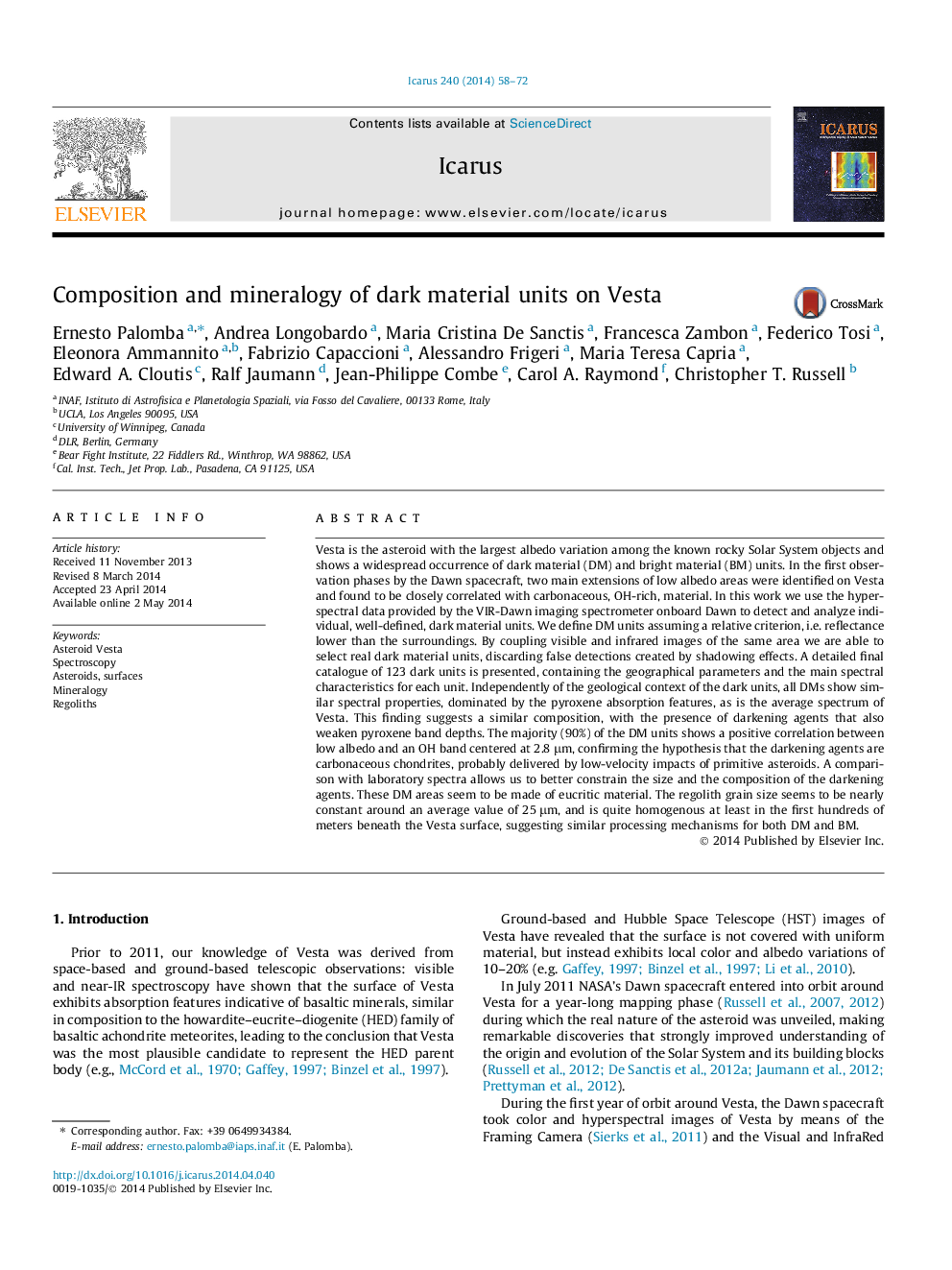| Article ID | Journal | Published Year | Pages | File Type |
|---|---|---|---|---|
| 1773066 | Icarus | 2014 | 15 Pages |
Abstract
Vesta is the asteroid with the largest albedo variation among the known rocky Solar System objects and shows a widespread occurrence of dark material (DM) and bright material (BM) units. In the first observation phases by the Dawn spacecraft, two main extensions of low albedo areas were identified on Vesta and found to be closely correlated with carbonaceous, OH-rich, material. In this work we use the hyperspectral data provided by the VIR-Dawn imaging spectrometer onboard Dawn to detect and analyze individual, well-defined, dark material units. We define DM units assuming a relative criterion, i.e. reflectance lower than the surroundings. By coupling visible and infrared images of the same area we are able to select real dark material units, discarding false detections created by shadowing effects. A detailed final catalogue of 123 dark units is presented, containing the geographical parameters and the main spectral characteristics for each unit. Independently of the geological context of the dark units, all DMs show similar spectral properties, dominated by the pyroxene absorption features, as is the average spectrum of Vesta. This finding suggests a similar composition, with the presence of darkening agents that also weaken pyroxene band depths. The majority (90%) of the DM units shows a positive correlation between low albedo and an OH band centered at 2.8 μm, confirming the hypothesis that the darkening agents are carbonaceous chondrites, probably delivered by low-velocity impacts of primitive asteroids. A comparison with laboratory spectra allows us to better constrain the size and the composition of the darkening agents. These DM areas seem to be made of eucritic material. The regolith grain size seems to be nearly constant around an average value of 25 μm, and is quite homogenous at least in the first hundreds of meters beneath the Vesta surface, suggesting similar processing mechanisms for both DM and BM.
Related Topics
Physical Sciences and Engineering
Earth and Planetary Sciences
Space and Planetary Science
Authors
Ernesto Palomba, Andrea Longobardo, Maria Cristina De Sanctis, Francesca Zambon, Federico Tosi, Eleonora Ammannito, Fabrizio Capaccioni, Alessandro Frigeri, Maria Teresa Capria, Edward A. Cloutis, Ralf Jaumann, Jean-Philippe Combe, Carol A. Raymond,
